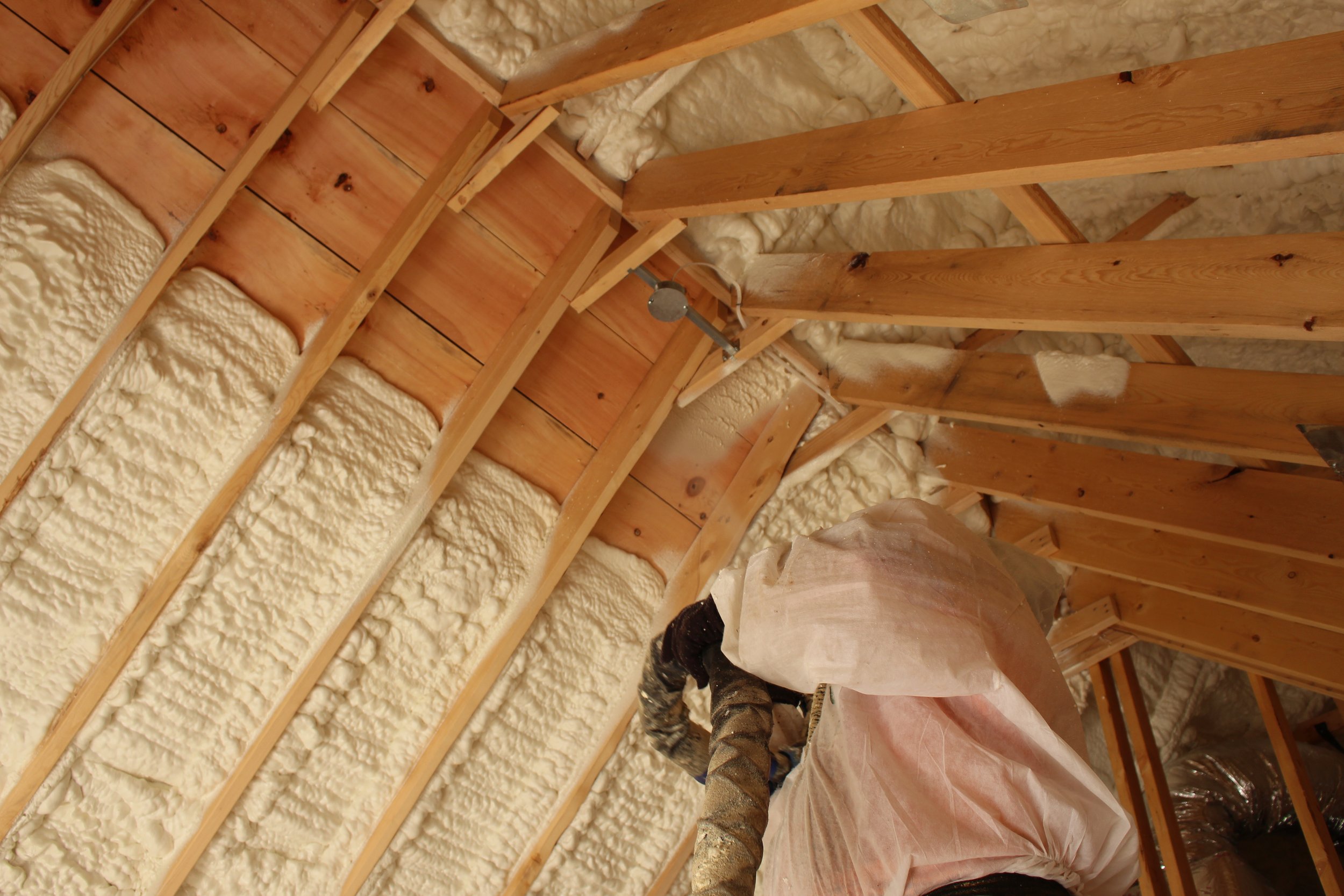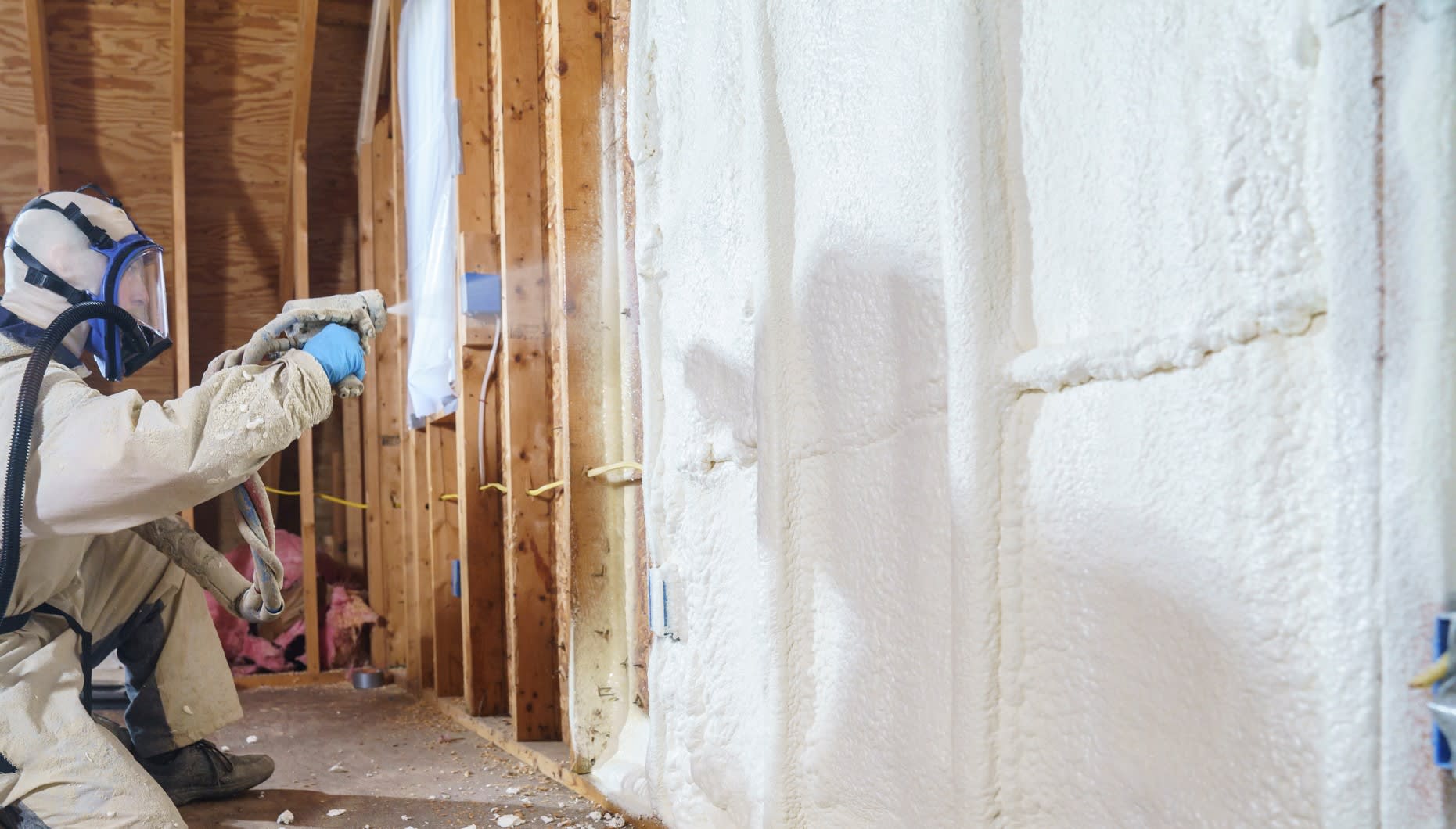Tips for Preserving Your Spray Foam Insulation for Long-Term Efficiency
Wiki Article
Spray Foam: The Ultimate Service for Air Sealing and Insulation
Spray foam insulation has emerged as a leading remedy for efficient air securing and thermal insulation, providing a distinct mix of residential or commercial properties that establish it apart from conventional methods. Recognizing the complete scope of its advantages, installment procedures, and comparisons with other insulation kinds is important for making informed decisions.What Is Spray Foam?
Spray foam is a flexible insulation product that integrates the concepts of air securing and thermal resistance to improve power performance in structures. Composed largely of polyurethane or other similar compounds, spray foam is used as a liquid that expands upon call with surfaces, creating a strong, continuous layer of insulation. This unique residential or commercial property enables it to fill up voids, cracks, and gaps that traditional insulation products might overlook, providing a remarkable air seal.There are 2 main kinds of spray foam: open-cell and closed-cell. Open-cell spray foam is lighter and a lot more adaptable, offering superb audio absorption and a lower R-value per inch - Spray Foam. On the other hand, closed-cell spray foam is denser, providing a higher R-value, moisture resistance, and included architectural integrity to developing parts
The application procedure commonly includes customized devices, guaranteeing a seamless application that follows various substrates, consisting of concrete, timber, and metal. This adaptability makes spray foam suitable for both new constructions and retrofitting existing structures. Its capability to create an impermeable obstacle substantially contributes to decreasing power consumption and improving indoor air top quality, thereby making it a preferred choice amongst builders and home owners alike.
Advantages of Spray Foam Insulation
One of the most significant advantages of spray foam insulation is its remarkable capacity to create a continual air barrier, which effectively lessens power loss. Unlike standard insulation materials, spray foam broadens to load cracks and gaps, making sure that air leak is considerably lowered. This characteristic not only improves energy performance however additionally leads to reduce energy expenses in time.
Additionally, spray foam insulation provides premium thermal resistance, contributing to a more stable interior atmosphere. Its high R-value per inch permits reliable insulation in restricted rooms, making it optimal for attics, wall surfaces, and crawl areas. In addition, the moisture-resistant residential properties of spray foam aid stop mold and mildew growth, promoting much healthier living problems.
One more important advantage of spray foam insulation is its sound-dampening top qualities (Spray Foam). It effectively lowers sound transmission between spaces, producing a quieter and much more comfy home setting. The durability of spray foam likewise attracts attention, as it does not droop or settle gradually, preserving its efficiency throughout its lifespan
Just How Spray Foam Functions
Recognizing just how spray foam insulation works is crucial for appreciating its effectiveness in air securing and thermal resistance. Spray foam insulation contains two main components: isocyanate and polyol resin. When these parts are mixed, they undertake a chemical response that creates the material to increase quickly, developing a thick foam that fills cracks, gaps, and cavities.As the foam increases, it complies with surface areas, developing a closed seal that dramatically decreases air seepage. This characteristic makes spray foam insulation highly effective at avoiding drafts and moisture infiltration, which can cause power loss and damage with time. In addition, the closed-cell variant of spray foam provides superior thermal resistance because of its inflexible structure, successfully decreasing warmth transfer.
The distinct residential or commercial properties of spray foam permit it to comply with irregular surfaces, ensuring extensive insurance coverage and a seamless barrier. Because of this, spray foam insulation not only boosts power efficiency yet also adds to boosted indoor air top quality by minimizing the accumulation of contaminants and allergens. Ultimately, understanding the auto mechanics behind spray foam highlights its duty as a remarkable choice for insulation and air securing in both property and business resource applications.
Setup Refine Overview

Before installation, the area has to be sufficiently cleaned up and prepped, making certain that surface areas are without debris, dampness, and dust. Due to the fact that impurities can compromise adhesion and overall performance, this step is important. When the area is prepared, the application includes blending the two components of the spray foam, which expands upon get in touch with and loads voids successfully.
Trained specialists need to perform the installment, making use of specialized tools to he said ensure uniform insurance coverage and ideal density. Security safety measures, including using protective gear and guaranteeing proper ventilation, are essential during this process. After application, Continued the foam usually remedies swiftly, developing a strong obstacle that enhances energy efficiency.
Comparing Spray Foam to Conventional Insulation
When evaluating insulation choices, spray foam insulation stands apart in comparison to conventional products such as fiberglass and cellulose. Among the main advantages of spray foam is its premium air securing abilities. Unlike fiberglass and cellulose, which can allow air infiltration, spray foam increases upon application, filling up voids and holes to create an impermeable seal. This causes boosted energy efficiency, as less warmed or cooled air gets away the home, resulting in reduced utility expenses.Additionally, spray foam offers a higher R-value per inch than traditional insulation types, supplying more effective thermal resistance in a thinner account. This particular is especially beneficial in spaces with restricted tooth cavity depth. Spray foam is immune to wetness and mold and mildew development, which can be a considerable problem with cellulose and fiberglass, specifically in damp settings.
Nonetheless, spray foam insulation usually lugs a greater upfront expense than its traditional counterparts. Property owners need to consider this first financial investment versus long-lasting power savings and efficiency advantages. Ultimately, while both insulation types offer their objective, spray foam arises as an advanced option for contemporary insulation requirements, particularly in regards to air securing and thermal performance.

Verdict
In summary, spray foam insulation stands for a very reliable remedy for achieving optimum air sealing and thermal resistance. Its unique homes, including dampness resistance and sound dampening, make it suitable for numerous applications in both brand-new buildings and retrofitting tasks (Spray Foam). The preliminary costs may be higher contrasted to typical insulation products, the lasting benefits, such as considerable energy savings and enhanced indoor air quality, warrant the investment and underscore its worth in modern building techniques.Spray foam insulation has arised as a leading remedy for efficient air securing and thermal insulation, offering an unique combination of residential or commercial properties that set it apart from conventional methods.Spray foam is a versatile insulation material that combines the principles of air sealing and thermal resistance to enhance power efficiency in buildings.When examining insulation choices, spray foam insulation stands out in comparison to conventional materials such as fiberglass and cellulose. Eventually, while both insulation types serve their function, spray foam arises as a more innovative remedy for modern-day insulation requirements, particularly in terms of air sealing and thermal effectiveness.
In recap, spray foam insulation represents a very effective solution for accomplishing optimal air securing and thermal resistance.
Report this wiki page